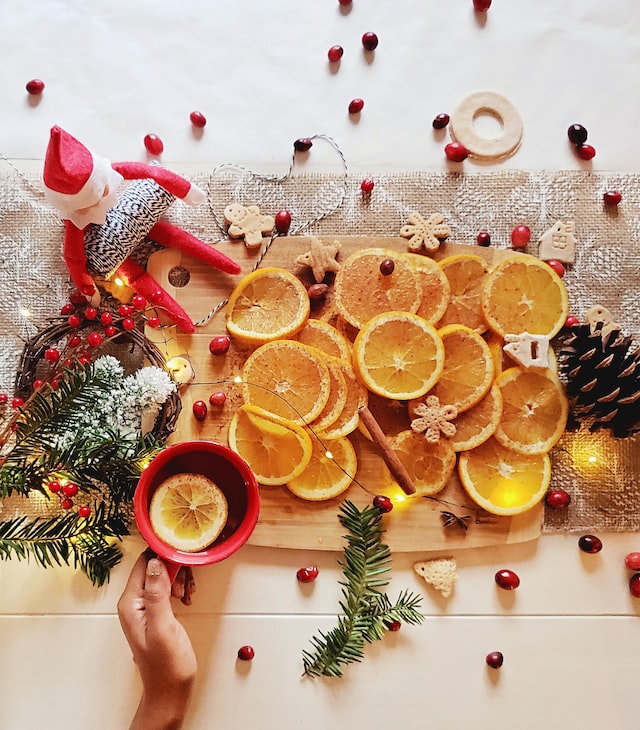My favorite time of year is upon us once more. The countdown to the Christmas pleasure is in full swing, and the majority, if not all of us are rushing around like ants either buying, feasting, or drinking, hopefully in plenty. Although it’s not really any different from any other time of the year, Old Town Orange is my favorite destination for this particular season (although DTSA is gradually making a resurgence in the depths of my sentimental soul). Old Towns, however, continue to occupy a unique niche because of their Mayberry-style Christmas atmosphere. If you need any proof that it’s an unrepentant throwback to a period when “Merry Christmas” instead of “Happy Holidays” was the greeting, go no further than its yearly tree-lighting ritual. And that’s okay with me. A pleasant afternoon spent browsing for trinkets and stocking stuffers for that particular someone on your list is always present, in addition to the overbearing Christmas greetings. By the way, you are included in this. Sometimes the best present is giving oneself a gift. America is what it is after all.
You never know when you’ll stumble into a ghost from the past while browsing the booths and nooks of one of the many antique stores, a perfect addition to the Yuletide mood, one that would make Ebenezer Scrooge frown with sombre and firm hatred for all things genuinely Navidad. The Great American Christmas Orange is the topic at hand. It comes in a variety of shapes—typically an ornament, but occasionally a vintage print or photograph. It’s a “Yankee Doodle Dandy” phenomenon with a unique local history that dates back to an era before fast transit between the cold regions of the Midwest and East Coast and their coasts. How then did this arbitrary custom begin? What might possibly have caused this instance of seasonal humour to enter our Western cultural language and end up on the mid-century mantle of several snowbound households—and beyond?
It’s a two-part tale, the first of which is centred on the enduring customs that gave rise to the holiday season as we know it today. That is, if you don’t believe that the Romans used a pagan celebration for their own purposes. Who would be so foolish as to believe that, though? However, the most touchingly genuine Christmas setting—poverty—is the source of both stories which are dreadful, horrific, degrading poverty in abundance.
Anyway, let’s move on
Saint Nick as we know him—also known as Saint Nicholas of Myra, the forerunner of Sinterklass—lives on now only as the patron saint of giving gifts; his other spiritual expressions have long since vanished. The plot is as follows: In order to avoid the daughters of the home from being sold into sex slavery to help pay the bills, he once went to a poor family to provide gold. Depending on whatever account of the events you believe, he either presented gold nuggets or balls by putting them in the kids’ stockings that were drying overnight by the fire, starting another Western Christmas custom. Those golden spheres were discovered the next morning by the thankful family, and they served as the basis for our own citrus-based custom.
So how did these two distinct worlds come together? Well, exotic fruit was reintroduced as a gift to represent the festive spirit during the Great Depression, when food was scarce and money much more so—a penny-pinching measure amid the hardest of circumstances. A fresh orange from California or Florida was a genuine pleasure and a reminder of a magical, wealthier world outside of your own, as well as perhaps an ever-so-subtle glimmer at a life more hopeful, if you lived in the cold parts of the Great American Interior.
Even after this, during the time of railways and early aviation, Christmas guests might flaunt their social standing by bringing fruit from sunny locations to give to their less wealthy relatives as a perhaps not-so-subtle display of excess and as a passive-aggressive festive middle finger. Who knows, maybe they were simply being polite. During the winter, members of my West Coast relatives would bring oranges to family events and places of business to show people what life was like outside of places like Chicago or New York. The Christmas Orange would soon turn into a nostalgic relic of bygone eras, a nod to an antiquated aesthetic that predated us greatly. This persisted throughout the 1950s and 1960s. The Great American Citrus Ornament is the result, and you may get it at your preferred antique store.
So consider it in this way this season. Keep in mind that this season is about giving thanks and being in community—two things that don’t necessarily align with the way things are right now. For the time being, however, enjoy this tiny piece of Orange County history as a reminder of a time (or eras) when the abundance we can find now wasn’t as frequent and a piece of fruit that was thrown away was often a symbol of optimism and even sustenance.
